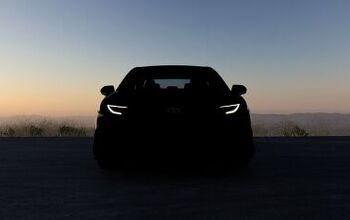20 Views
Michigan State Police Say Most Speed Limits Are Too Low

by
Ronnie Schreiber
(IC: employee)
Published: July 27th, 2014
Share
Michigan State Police photoIn his capacity as the former head of the MSP’s Traffic Services Section it was Lt. Gary Megge’s job to eliminate speed traps set up by local municipalities. A few years ago Megge told the Detroit News, “I’ve spent eight years in traffic services, and I was a crash reconstructionist for five years before that, so I’ve seen my share of fatal wrecks, and I can tell you: Deaths are not caused by speeding. They’re caused by drinking, drugs and inattentiveness. The old adage that speed kills just isn’t realistic. The safest speed is the speed that is correct for that roadway at a given time. A lot of speed limits are set artificially low.”

Ronnie Schreiber
Ronnie Schreiber edits Cars In Depth, the original 3D car site.
More by Ronnie Schreiber
Published July 27th, 2014 10:03 AM
Latest Car Reviews
Read moreLatest Product Reviews
Read moreRecent Comments
- Michael Gallagher I agree to a certain extent but I go back to the car SUV transition. People began to buy SUVs because they were supposedly safer because of their larger size when pitted against a regular car. As more SUVs crowded the road that safety advantage began to dwindle as it became more likely to hit an equally sized SUV. Now there is no safety advantage at all.
- Probert The new EV9 is even bigger - a true monument of a personal transportation device. Not my thing, but credit where credit is due - impressive. The interior is bigger than my house and much nicer with 2 rows of lounge seats and 3rd for the plebes. 0-60 in 4.5 seconds, around 300miles of range, and an e-mpg of 80 (90 for the 2wd). What a world.
- Ajla "Like showroom" is a lame description but he seems negotiable on the price and at least from what the two pictures show I've dealt with worse. But, I'm not interested in something with the Devil's configuration.
- Tassos Jong-iL I really like the C-Class, it reminds me of some trips to Russia to visit Dear Friend VladdyPoo.
- ToolGuy New Hampshire


































Comments
Join the conversation
Started driving in the '70s and have garnered exactly one speeding ticket. If nefarious revenue conspiracy this be, hasn't much worked with me. Non-issue.
Increased speed limits on freeways would be nice, but I'd be afraid of merging. Not because I can't get up to the required speed within the confines of a typical Minnesota entrance ramp, but because I always get stuck behind the people who don't understand that getting to freeway speed is the who point of an acceleration lane - and usually hit the freeway at 40 mph. There's nothing more exciting, in an explosive diarrhea kind of way, than getting onto a 70 mph freeway going 40 mph merging in front of a 70 mph semi with nowhere to go. There have been times that I have hoped for a red light getting onto the freeway (as long as I'm first in line) so that I could get to speed and safely merge. When I have my druthers I usually hit any freeway at 75 mph.